Glamping may be the new camping, but the desire for a primitive experience in the wild will never go out of style. And opportunities for wilderness camping on the Canadian east coast and in the Maritime Provinces are plentiful. The tiny provinces of Nova Scotia and New Brunswick boast some of the most spectacular coastline parks in the world.
For Kate Trecartin, going it alone in a coastal park was the mental preparation needed for an upcoming solo backpacking tour of Central America. Several trips to the gym each week and hikes in her local nature park helped prepare her physically. Mentally and emotionally, she familiarized herself with what you might expect, but in her own words, “I tried not to think about it too much.”
Kate’s hiking and camping adventures in the Maritime Provinces are found below, and both parks offer maps, information packs, and check-ins for hikers.
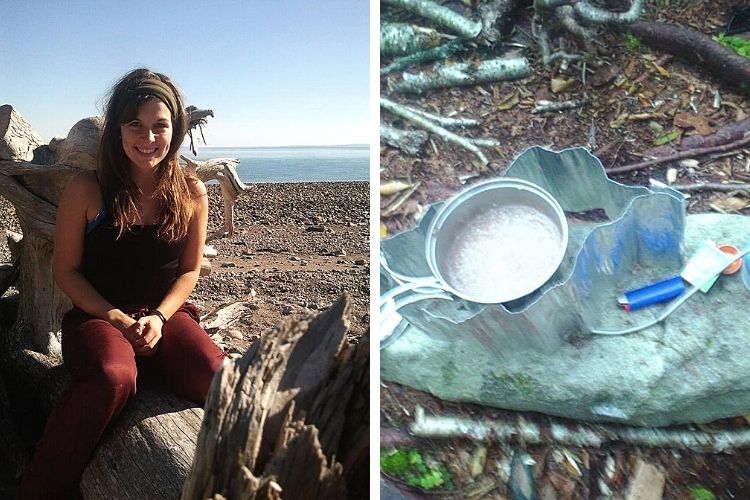
R: Kate is ready for her adventures! L: She’s prepared with her single burner camp stove. Photos: Kate Trecartin
Some of the links in this article may contain affiliate links. When you make a purchase using these links, part of the proceeds go to Snowshoe Mag. Additionally, as an Amazon Associate, we earn from qualifying purchases. Please see our disclosure for more details.
Cape Chignecto Provincial Park
Kate took on Cape Chignecto Provincial Park, Nova Scotia, for her first wilderness hike. It’s located on the stunning Bay of Fundy, a designated UNESCO biosphere reserve of sea cliffs and fossil ecozone. In 2021, the park is celebrating 25 years of operation!
She covered about 52kms of clearly marked, groomed trails that took her along the rocky coastline, with its deep valleys and 180m cliffs, and through an evergreen forest where 28 tenting sites are easily accessed. The breathtaking views of the bay were the perfect reward after every steep climb up the many valleys along the coast.
Kate was challenged by the rugged terrain but not overwhelmed. The campsites had outhouses, and there were plenty of streams to replenish her water supply. In addition, it’s a busy trail which made her feel a little less alone. However, it was late spring, and the weather turned cold, so extra warmer clothes and wool socks would have been a welcome addition to her pack.
Some of Kate’s favorite light-weight camping gear that she took while in the Maritime Provinces include a self-inflating bedroll, a gravity-fed water filter, and a single-burner camp stove (read our review of the MSR’s EXG EX). Trecartin completed the hike in two days but would probably do it in the recommended three next time.
Read More: What to Bring When Snowshoeing: Top Accessories for the Day Hiker
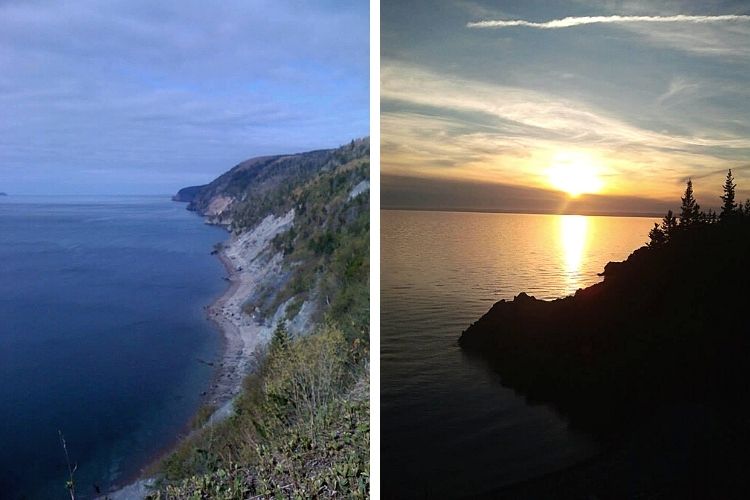
The spectacular sea cliffs and a beautiful sunset are only a few beautiful scenes at Cape Chignecto Provincial Park. Photos: Kate Trecartin
Fundy National Park
The Fundy Foot Path is 49 km of primitive wilderness trail stretching from the Fundy Trail, located in the historic coastal village of St. Martin’s, to Fundy National Park in Alma, New Brunswick. When Kate mentioned she was attempting it alone, seasoned hikers thought she was crazy. It turned out to be far more psychologically and physically challenging than Cape Chignecto and definitely turned this novice into an experienced survivalist.
The primitive paths meander through some of the most rugged terrains on the East Coast. Massive boulders, old-growth forest, and 100m rocky cliffs will challenge the most seasoned hiker. There are plenty of streams for freshwater, primitive tenting sites, and no outhouses.
You have to time the crossing of two tidal rivers with low tide. The bay has the highest tides in the world, but hiking the beach when the tide is out is a chance to walk the ocean floor.
Read More: Book Review: Outdoor Safety and Survival by Mike Nash
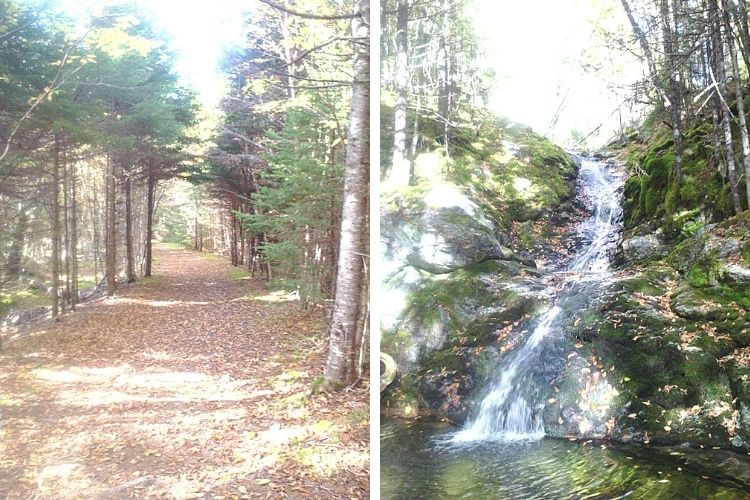
L: Don’t let this starting point in the Fundy Trail fool you. The Fundy Foot Path is not for the faint of heart. R: An example of the incredible natural beauty you’ll encounter. Photos: Kate Trecartin
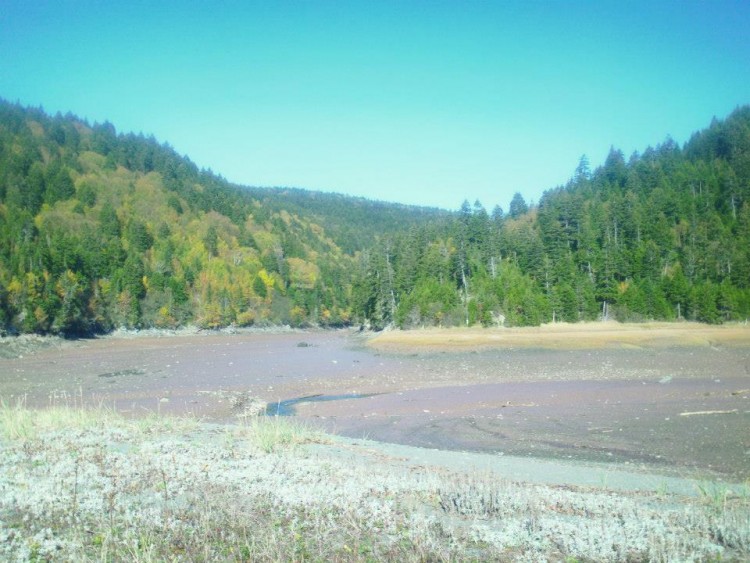
First tidal river crossing. If you miss the low tide, you have to hike upstream to find a narrow enough crossing. At high tide, the river is impassable. Photo: Kate Trecartin
Unmatched Scenery
In Kate’s opinion, the most scenic places are on the St. Martin’s end of the hike. And flora and fauna of the area are unmatched. In addition, the trail crosses several babbling brooks you can follow back to the coast if necessary.
The serenity and intensity of the hike itself kept Kate focused and taught her to trust her instincts. According to Kate, the “crazy elevation changes” weren’t rewarded with scenic views as often as Cape Chignecto, but still some beautiful scenery. She advises being sure of your next white marker before continuing on the trail. She did meet up with a group of guys, but other than that, she was alone in the wild.
The guys’ campfire was a welcome sight as it was getting dark, but as a petite 24-year-old woman, setting up camp at the same site as the group of men was unnerving at first. But Kate proved to herself she could do anything she put her mind to. She doesn’t recommend solo hiking the Foot Path unless you are a seasoned veteran of challenging terrain and truly primitive wilderness camping. Instead, it’s recommended you do it in four to five days with a partner– Kate did it in three.
The experience gave her the confidence to push herself further. So, after her stint in Central America, she took on her next wilderness challenge.
Read More: 7 Typical Backcountry Snowshoeing Mistakes and How to Avoid Them
Have you been camping or hiking in either of these parks in the maritime provinces? What recommendations would you provide? Please share your experiences in the comments below.
This article was first published on July 1, 2014, and was most recently updated on July 15, 2021.
Read Next: Wilderness Camping in the Maritime Provinces: Best with a Buddy

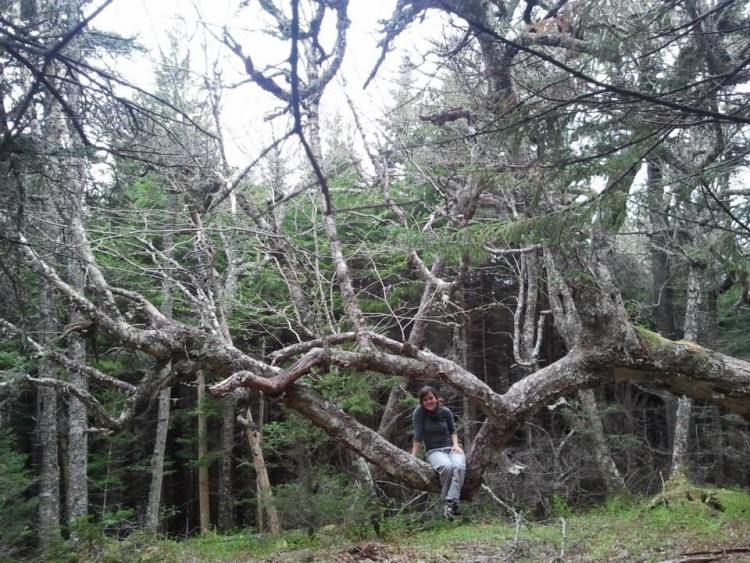
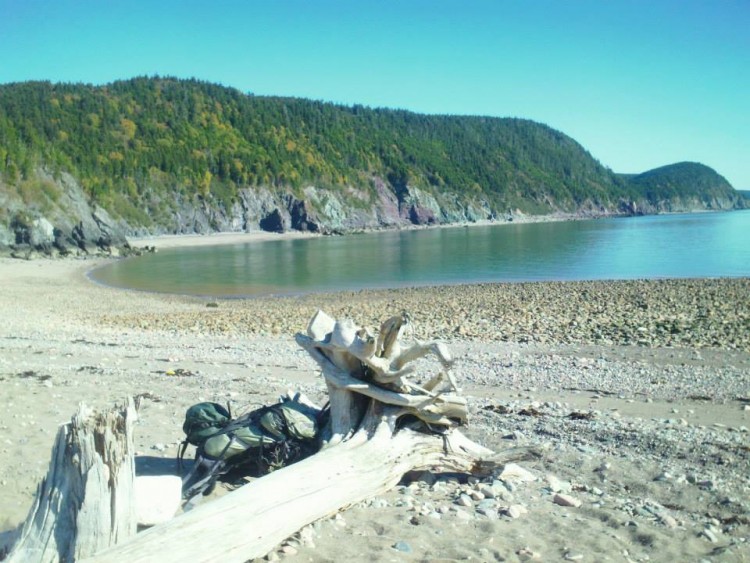
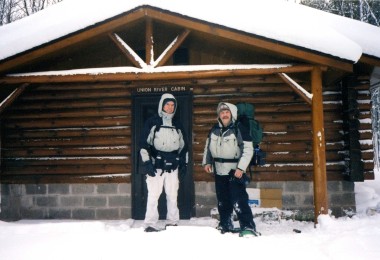




Leave a Comment